ABA Therapist Demographics
Overview of ABA Therapists
ABA therapists are the unsung heroes for folks with developmental disabilities, especially those on the Autism Spectrum. They whip up personalized plans to boost social, communication, and learning skills using positive reinforcement. The ABA therapy scene is a melting pot, with professionals hailing from all sorts of backgrounds.
Distribution by Age and Gender
When it comes to age and gender, ABA therapists are a mixed bag. The average therapist is 42 years old, but this can change depending on race, gender, and where they hang their hat. Knowing the age spread helps us figure out the experience levels in the field.
| Age Group | Percentage of ABA Therapists |
| 20-29 | 15% |
| 30-39 | 25% |
| 40-49 | 30% |
| 50-59 | 20% |
| 60+ | 10% |
Gender-wise, the field is mostly female, with women making up a hefty chunk of the workforce. This gender mix calls for inclusive practices and support systems to keep things fair and square.
| Gender | Percentage of ABA Therapists |
| Female | 75% |
| Male | 25% |
These numbers give us a peek into the current scene of ABA therapists. For more juicy details on job numbers and hot spots, check out our section on ABA Therapist Statistics in the U.S..
The diversity in ABA therapists also covers race and ethnicity, which is key for delivering culturally aware care to folks from all walks of life.
If you’re thinking about jumping into the ABA therapy world, knowing the demographics can be a real eye-opener. Dive into more about the educational paths and paycheck expectations in our section on Becoming an ABA Therapist.
ABA Therapist Statistics in the U.S.
Employment Numbers
ABA therapy is on the rise, and it’s not slowing down anytime soon. By 2023, over 33,633 folks are working as ABA therapists in the U.S.. This number keeps climbing each year, thanks to the growing need for these services. Why the boom? More kids are being diagnosed with autism, with about one in 36 children identified with autism spectrum disorder (ASD) back in 2020.
| Year | Number of ABA Therapists |
| 2020 | 30,000 |
| 2021 | 31,500 |
| 2022 | 32,500 |
| 2023 | 33,633 |
In-Demand Locations
ABA therapists are hot commodities in many parts of the U.S. New York City tops the list for needing ABA pros. But don’t count out places like Colorado and Utah, where demand is also high due to more people and better awareness about autism.
| State | In-Demand Locations |
| New York | New York, NY |
| Colorado | Denver, CO |
| Utah | Salt Lake City, UT |
| California | Los Angeles, CA |
| Texas | Houston, TX |
If you’re thinking about jumping into an ABA therapy career, knowing where the jobs are can give you a leg up.
The need for ABA therapists isn’t going away, especially with more autism diagnoses and the proven benefits of early intervention. This means lots of chances for those in the field. For more on career growth and what you might earn, take a look at our articles on ABA therapist career growth and ABA therapist salary statistics.
ABA Therapist Job Insights
Job Retention Rates
ABA therapists don’t tend to stick around for long. About 29% of them leave their jobs within a year. This revolving door is often due to stress, heavy workloads, and the lure of better career opportunities. Employers and professionals need to get a grip on these numbers to boost job satisfaction and keep their teams stable.
Average Starting Salary
Money talks, especially when you’re starting out as an ABA therapist. The average newbie earns around $30,000 a year. But don’t let that number fool you—experience, location, and extra qualifications can bump up your paycheck. The top earners in the field rake in $43,000 or more annually.
For a bigger picture, Applied Behavior Analysis Edu notes that as of July 2023, the average base salary for ABA therapists is $85,571 per year. States like New Jersey ($95,532), Wisconsin ($94,521), and Nevada ($91,642) are where the big bucks are. Salaries typically range from $70,000 to $89,500, with some lucky folks making up to $151,000 according to ZipRecruiter. These figures depend on where you live, how much experience you have, and your professional credentials.
| State | Average Salary |
| New Jersey | $95,532 |
| Wisconsin | $94,521 |
| Nevada | $91,642 |
These job insights are a goldmine for anyone thinking about becoming an ABA therapist. It’s crucial to weigh the educational paths and certification requirements, which often involve over 1,000 hours of hands-on clinical experience under the watchful eye of a qualified BCBA or instructor.
Global ABA Therapist Scene
Worldwide Practitioners
Applied Behavior Analysis (ABA) therapy is a go-to treatment for folks with Autism Spectrum Disorder (ASD) and similar conditions. Across the globe, about 90,000 ABA therapists are on the job, working hard to make life better for those with autism through proven methods.
| Region | Number of ABA Therapists |
| United States | 60,000 |
| Rest of the World | 30,000 |
| Total | 90,000 |
ABA therapists are spread out differently depending on where you look. Most of them are in the United States, which has the highest number of practicing ABA therapists.
U.S. Dominance in ABA Therapy
The United States is the big player here, with around 60,000 ABA therapists. This is due to a few reasons, like the high number of autism cases and a solid system backing ABA therapy.
In the past ten years, the need for ABA therapists in the U.S. has shot up. Job listings for behavior analysts jumped by a whopping 4,209 percent leading up to 2020. This boom is tied to more autism diagnoses, with about one in 36 kids being diagnosed with ASD in 2020.
The U.S. also has a strong network of schools and certification programs to train ABA therapists. If you’re thinking about getting into this field, there are plenty of ways to do it, like degree programs and certification paths.
ABA therapy is known to work wonders, especially if started early. Studies show that beginning therapy before age four can lead to big improvements in language, behavior, and social skills. These benefits can last up to 18 years, showing the long-term value of ABA therapy.
To wrap it up, the global scene of ABA therapists is heavily centered in the U.S. This is driven by the high demand for therapy, the number of autism cases, and the strong support for training and certification.
ABA Therapy Effectiveness
Early Intervention Benefits
Getting a jump start with Applied Behavior Analysis (ABA) therapy can really make a difference for kids with Autism Spectrum Disorder (ASD). Experts say the earlier, the better—ideally before they hit four years old. Little ones between 2 and 6 are like sponges, soaking up all sorts of learning and development.
Research shows that diving into intensive ABA therapy early can lead to big wins in areas like talking, making friends, and handling everyday stuff. Kids who clock in 36 hours or more of ABA therapy each week tend to make serious strides, with more hours often leading to even better results. About 60% of the skills boost, especially in school and language, comes from the amount of therapy time.
| Age Group | Optimal Therapy Hours | Key Benefits |
| 2-4 years | 36+ hours/week | Language development, social skills, adaptive behaviors |
| 4-6 years | 36+ hours/week | Cognitive skills, overall functioning |
Impact on Developmental Progress
ABA therapy’s impact on development is pretty solid. Early Intensive Behavioral Intervention (EIBI), which follows ABA principles, has been shown to boost cognitive skills, language abilities, and overall functioning. A study by Eikeseth in 2009 found that the good stuff from EIBI sticks around even after the therapy wraps up.
Starting ABA therapy early, ideally before age five, can lead to major developmental shifts in children. Some studies have shown that beginning therapy as young as 18-30 months can result in substantial improvements. Even for older children, early intervention holds promise, with an average age of around 7 and a half in some studies showing significant benefits.
| Study | Age Range | Key Findings |
| Eikeseth (2009) | 2-6 years | Improvements in cognitive skills, language abilities, overall functioning |
| Mastermind Behavior (2023) | 18-30 months | Major developmental shifts, substantial improvements |
ABA therapy is most effective when initiated early, ideally before the age of four. Most children enter treatment between the ages of 2 and 6, with research suggesting that early intervention can lead to substantial improvements in language development, adaptive behaviors, and overall social and daily living skills. These benefits can be maintained up to 18 years later.
Becoming an ABA Therapist
Educational Pathways
So, you’re thinking about becoming an ABA therapist? Well, buckle up, because it’s a bit of a ride! The whole process can take anywhere from 4 to 7 years, depending on how far you want to go and what your goals are. Here’s the scoop:
- Registered Behavior Technician (RBT): If you’re itching to jump into the field quickly, this is your ticket. You can wrap this up in about 6 months to 2 years, depending on how much time you can put in. RBTs work under the watchful eye of a Board Certified Behavior Analyst (BCBA).
- Board Certified Assistant Behavior Analyst (BCaBA): Ready to level up from RBT? You’ll need a bachelor’s degree for this one. It lets you work more independently, but you’ll still have a BCBA keeping an eye on things. Expect to spend about 4 years hitting the books for that degree.
- Board Certified Behavior Analyst (BCBA): Now, if you’re aiming for the top, you’ll need a master’s degree in Applied Behavior Analysis, psychology, or something similar. This usually takes 2-3 years, plus some supervised fieldwork. Once you’ve got that degree, it’s time to tackle the BCBA certification exam.
- State Licensure: After you’ve nailed the BCBA certification, you might need to get state licensure, depending on where you live. This step makes sure you’re all set to practice on your own.
Salary Expectations
Let’s talk money, because who doesn’t want to know what they’ll be making? Salaries for ABA therapists can be all over the map, depending on where you are, how much experience you’ve got, and your certification level. Here’s a quick rundown:
| Certification Level | Average Salary (USD) |
| Registered Behavior Technician (RBT) | $30,000 – $45,000 |
| Board Certified Assistant Behavior Analyst (BCaBA) | $45,000 – $65,000 |
| Board Certified Behavior Analyst (BCBA) | $60,000 – $80,000 |
| Experienced BCBA | $80,000 – $100,000+ |
Keep in mind, where you live can make a big difference. Places like Colorado and Utah might offer different pay scales compared to other spots.
By getting a handle on the educational paths and salary expectations, you can make smart choices about diving into this fulfilling career.
SOURCES:
https://www.appliedbehavioranalysisedu.org/salaries/
https://pmc.ncbi.nlm.nih.gov/articles/PMC6494600/
https://www.ziprecruiter.com/Salaries/Aba-Therapist-Salary
https://apploi.com/blog/how-to-lower-turnover-for-aba-therapists/#:~:text=According%20to%20the%202022%20ABA,job%20for%201%20–%202%20years.
https://post.edu/blog/how-to-become-an-aba-therapist/
https://www.indeed.com/career-advice/finding-a-job/what-is-aba-therapist


